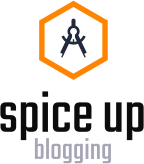Revolutionizing Retail: The Power of Electronic Shelf Labeling
June 5, 2023 - 0 COMMENTS

Electronic Shelf Labeling (ESL) is a revolutionary technology that has transformed the retail industry by replacing traditional paper price tags with digital displays. These electronic labels provide numerous benefits to both retailers and consumers, ranging from improved pricing accuracy to enhanced efficiency in store operations.
ESL consists of small, battery-powered devices that are attached to store shelves, displaying product information such as prices, promotions, and product details. These labels are wirelessly connected to a central server, enabling retailers to update and synchronize pricing information in real-time across all the labels in the store.
One of the key advantages of ESL is its ability to eliminate pricing errors. In traditional retail environments, price changes are manually updated, leading to mistakes and discrepancies. ESL automates the price update process, ensuring that the prices displayed on the shelves are always accurate and up-to-date. This not only improves customer satisfaction but also prevents losses for retailers due to pricing discrepancies.
Moreover, ESL enables retailers to implement dynamic pricing strategies. They can easily change prices based on factors such as demand, inventory levels, or time of day. For instance, retailers can offer time-limited promotions or adjust prices during peak hours to optimize sales. This flexibility in pricing empowers retailers to respond quickly to market dynamics and improve their competitive edge.
ESL also enhances operational efficiency for retailers. With traditional paper tags, employees have to manually update prices, which is time-consuming and prone to errors. ESL eliminates the need for manual price changes, freeing up employees to focus on other important tasks. Additionally, ESL enables retailers to perform price updates remotely and simultaneously across multiple stores, saving time and resources.
From a consumer perspective, ESL offers several advantages as well. Customers can easily read the digital Shelf Labels, which often provide additional product information such as nutritional details, ingredients, or reviews Moreover, ESL enables retailers to display personalized offers or recommendations to individual customers based on their purchase history or preferences, enhancing the shopping experience.
ESL also supports sustainability efforts in the retail industry. By replacing paper tags with digital displays, retailers significantly reduce paper waste and contribute to a more eco-friendly shopping environment. Furthermore, ESL reduces the need for physical label printing, ink, and other resources, resulting in cost savings and a smaller carbon footprint.
Implementing ESL in a retail environment requires an initial investment in hardware and software infrastructure. However, the long-term benefits outweigh the costs. ESL improves pricing accuracy, reduces labor costs associated with manual price changes, and provides opportunities for revenue optimization through dynamic pricing strategies.
The adoption of ESL has been steadily growing, with many large retailers and supermarkets worldwide implementing this technology. As ESL technology continues to evolve, we can expect even more advanced features and integration with other retail systems, such as inventory management or mobile payment solutions.
In conclusion, Electronic Shelf Labeling is transforming the retail industry by replacing traditional paper price tags with digital displays. It offers numerous benefits, including improved pricing accuracy, dynamic pricing capabilities, enhanced operational efficiency, better customer experience, and sustainability advantages. ESL is revolutionizing the way retailers manage pricing and product information, leading to a more efficient and engaging shopping experience for both retailers and consumers.










